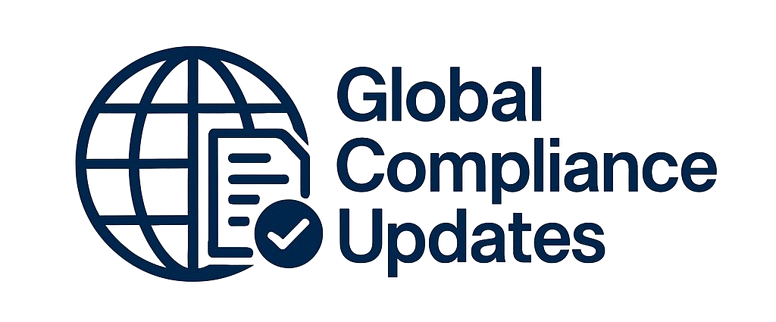With the current coronavirus scare, employers are taking active steps to ease the spread of the disease by allowing workers who are able to work from home. Though there has been a recent trend toward employers offering remote working and telecommuting arrangements, having a majority of your workforce working from home can be daunting when leaders and managers have firm deliverables and deadlines to meet. Join this webinar to learn several research-based tips on how to successfully manage employees who are working remotely. This webinar will review the benefits of allowing employees to work from home and give managers the tools they still need to get the performance they expect from their teams.
WHY SHOULD YOU ATTEND?
Do you worry about employees actually getting work done if they are not in the office? Or how the team is going to collaborate on important customer deliverables if everyone is not in the office? Or if they will get distracted by laundry and kids? Or if they are job hunting on LinkedIn since you’ve given them the option of telecommuting?
By attending this webinar, you will learn how you can mitigate the potential lost productivity of having employees work from home. Discover how to keep employee trust, bonding, collaboration, and accountability happening when you can’t see your employee working in the office each day. After attending this webinar, you will change your mindset and skillset for how to manage remote workers, not only during the current crisis but for the future as well.
AREA COVERED
- Potential pitfalls of having employees work remotely
- Signs of possible employee disengagement
- Creating a culture of trust and sharing
- What a manager can do to establish trust and accountability
- How to use technology to bridge the “visual” gap?
- Balancing face-to-face, telephone, and remote work
- What to “measure” to make sure work is getting done and employees are putting in the hours you expect?
- Benefits of a remote workforce
- How to keep your workforce calm and productive?
- Should you allow employees to work from home when the crisis is over?
LEARNING OBJECTIVES
- Learn how to maintain productivity from employees working from home
- Learn tips on how to set up better team collaboration among virtual teams
- Minimize management time by learning how to maintain streamlined communications and new work processes for working remotely
- Gain experience on how to leverage time zone differences to actually maximize project and speed of deliverables completion
- Compare the benefits of different remote technology you can set up for your virtual team infrastructure
- Learn three key communication tips that will keep your employees calm during the crisis
WHO WILL BENEFIT?
HR Managers and all functional line managers in any business: CEOs, VPs, middle managers, and supervisors
Do you worry about employees actually getting work done if they are not in the office? Or how the team is going to collaborate on important customer deliverables if everyone is not in the office? Or if they will get distracted by laundry and kids? Or if they are job hunting on LinkedIn since you’ve given them the option of telecommuting?
By attending this webinar, you will learn how you can mitigate the potential lost productivity of having employees work from home. Discover how to keep employee trust, bonding, collaboration, and accountability happening when you can’t see your employee working in the office each day. After attending this webinar, you will change your mindset and skillset for how to manage remote workers, not only during the current crisis but for the future as well.
- Potential pitfalls of having employees work remotely
- Signs of possible employee disengagement
- Creating a culture of trust and sharing
- What a manager can do to establish trust and accountability
- How to use technology to bridge the “visual” gap?
- Balancing face-to-face, telephone, and remote work
- What to “measure” to make sure work is getting done and employees are putting in the hours you expect?
- Benefits of a remote workforce
- How to keep your workforce calm and productive?
- Should you allow employees to work from home when the crisis is over?
- Learn how to maintain productivity from employees working from home
- Learn tips on how to set up better team collaboration among virtual teams
- Minimize management time by learning how to maintain streamlined communications and new work processes for working remotely
- Gain experience on how to leverage time zone differences to actually maximize project and speed of deliverables completion
- Compare the benefits of different remote technology you can set up for your virtual team infrastructure
- Learn three key communication tips that will keep your employees calm during the crisis
HR Managers and all functional line managers in any business: CEOs, VPs, middle managers, and supervisors
Speaker Profile
 Dr. B. Lynn Ware
Dr. B. Lynn Ware
Dr. Ware is an Industrial/Organizational Psychologist and CEO of Integral Talent Systems, Inc. (ITS)ITS is a global technology enabled talent management consulting firm specializing in bringing the science of talent management to the bottom line.ITS is a pioneer in the field of attracting and retaining top talent, as the company was the first consulting firm dedicated to this workplace issue that began emerging in the U.S. during 1996 and has since become a global concern.Dr. Ware is frequently engaged with corporate clients to provide guidance on how to create “employer of choice” environments, so that they can attract and keep the best talent in their respective industries.ITS provides this guidance …
Upcoming Webinars

ChatGPT and Project Management: Leveraging AI for Project M…

Workplace Investigations 101: How to Conduct your Investiga…

Project Management for administrative professionals

The Monte Carlo Simulations in Excel for Risky Investments

Onboarding is NOT Orientation - How to Improve the New Empl…

Dealing With Difficult People: At Work & In Life

Transform Data into Insights: A Beginners Guide to Excel Pi…

Construction Lending And Real Credit Administration: Evalua…

Understanding Accounting for non - Accounting professionals

Harassment, Bullying, Gossip, Confrontational and Disruptiv…

New Form 1099 Reporting Requirements: 2025 Compliance Update

Human Error Reduction Techniques for Floor Supervisors

HR Metrics and Analytics 2025 - Update on Strategic Plannin…

Treating Employees Like Adults: Discipline versus Empowerme…

7 Ways To Beat Burnout: Without Quitting Your Job


How to Write Procedures to Avoid Human Errors

Handbook Overhaul 2026: Compliance, OBBB Act & Beyond

FDA Proposes Framework to Advance Credibility of AI Models

Ethical Terminations: Navigating Employee Exits with Legal …

Understanding EBITDA – Definition, Formula & Calculation

Project Management for Non-Project Managers - Scheduling yo…

4-Hour Virtual Seminar on Hidden Secrets of Selling & Marke…

Validation Statistics for Non-Statisticians

Data Integrity and Privacy: Compliance with 21 CFR Part 11,…


The Alphabet Soup: When the FMLA, ADA, COBRA, and Workers' …

Talent Management: How to Leverage AI and ChatGPT Tools for…


Offboarding with Care: Conducting Legal & Ethical Employee …

2-Hour Virtual Seminar on How to Conduct an Internal Harass…

Payments Fraud Detect & Prevent Check, ACH and P-Card Schem…

Managing Toxic & Other Employees Who have Attitude Issues



Reduce Stress in the Workplace: Effective Ways to Handle Co…





Excel - Pivot Tables - The Key To Modern Data Analysis and …
